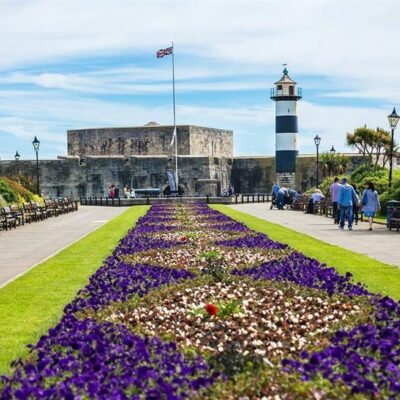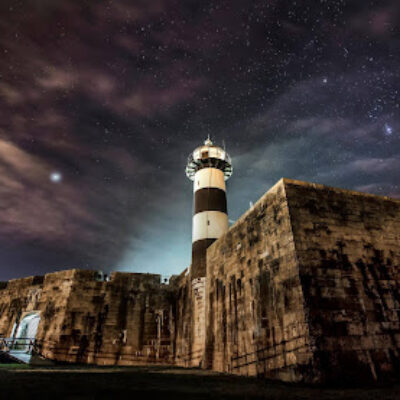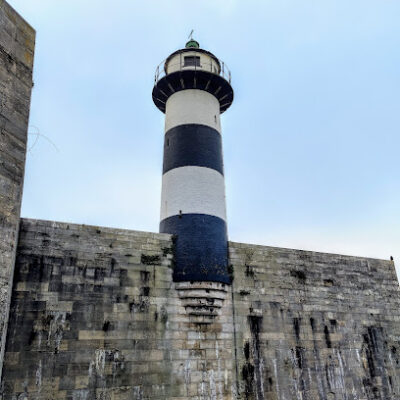Southsea Castle, historically also known as Chaderton Castle, South Castle and Portsea Castle,[1] is an artillery fort originally constructed by Henry VIII on Portsea Island, Hampshire, in 1544. It formed part of the King’s Device programme to protect against invasion from France and the Holy Roman Empire, and defended the Solent and the eastern approach to Portsmouth. The castle had a square central keep, two rectangular gun platforms to the east and west, and two angled bastions to the front and rear, and was an early English example of the trace italienne-style of fortification popular on the Continent. The Cowdray engraving of the Battle of the Solent in 1545 depicted Henry VIII visiting the castle. Despite several serious fires, it remained in service and saw brief action at the start of the English Civil War in 1642 when it was stormed by Parliamentary forces.
The castle was expanded in the 1680s by Sir Bernard de Gomme and, after a period of neglect in the 18th century, was redesigned again in 1814 during the Napoleonic Wars. After a brief period of use as a military prison in the 1840s, the fortification was expanded in the 1850s and 1860s with additional gun batteries on the east and west sides. The defences were upgraded throughout the century due to the fears of a French invasion and formed part of the plan for defending Portsmouth during the First World War. In the interwar years some of the fortifications were stood down, but the castle saw service again in the Second World War, when it was involved in Operation Grasp, the seizure of French naval vessels in Portsmouth harbour. In 1960, Southsea Castle, by now obsolete, was sold to Portsmouth City Council. It was restored to its pre-1850 appearance and opened as a tourist attraction, receiving over 90,000 visitors from 2011–12.




